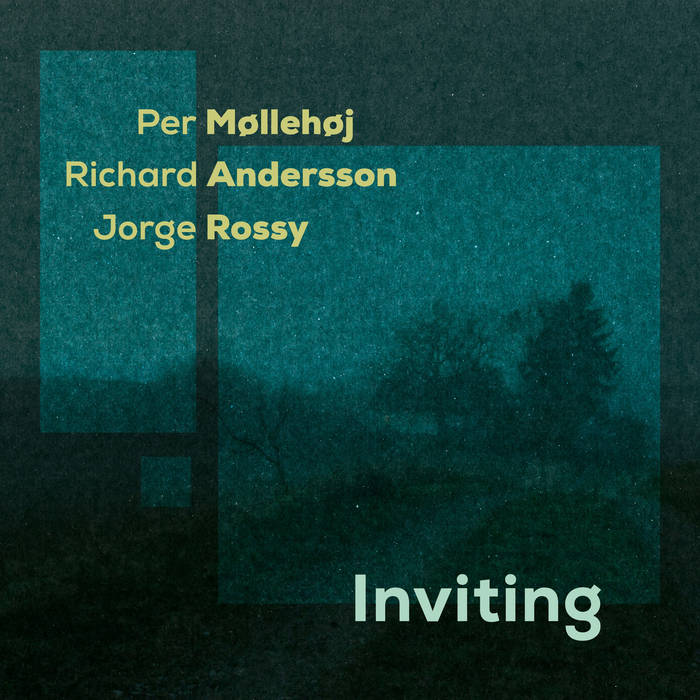Richard Andersson Inviting – Richard Andersson Inviting
Richard Andersson Inviting : Per Møllehøj (g), Jorge Rossy (dr), released August 12, 2022
Dass der Jazz in Dänemark nicht erst seit Niels-Henning Ørsted Pedersen am Bass einen herausragenden Ruf genießt in Europa, dürfte sich herumgesprochen haben, immerhin war Kopenhagen in den Sechzigern ein attraktiver Ort für so berühmte Jazzmusiker wie Stan Getz (1958-1961 in Dänemark), Oscar Pettiford am Bass (1958-1960 in Dänemark), gefolgt von Dexter Gordon (1962 – 1976), Kenny Drew (1961 bis zu seinem Tod 1993 in Dänemark), Ben Webster (1964 bis zu seinem Tod 1973 in Dänemark), Horace Parlan (1972 bis zu seinem Tod 2017 in Dänemark)und Thad Jones (1978 – 1984 in Dänemark), um nur einige zu nennen.
Der Club Jazzhuz Montmartre (offizielle Website) wurde gleich auch Zufluchts- wie Sehnsuchtsort, musste in den Neunzigern zwar schließen, eröffnete aber 2010 wieder. Im Paradise Jazz, im La Fontaine, im Atlas (Aarhus) finden ebenfalls Jazzauftritte statt. Zur Geschichte des Jazz in Dänemark verweise ich auf Wikipedia. (Weitere Hinweise findest du auf dieser Seite: Jazz Albums Denmark Review 2021)
Unser Augenmerk gilt dem bei Insidern angesagten Bassisten Richard Andersson, geb. 1982, mit vierzehn bei einem Feuerwerksunfall erblindet, und trotzdem oder gerade deswegen blicken wir auf ein sehr umfangreiches Gesamtwerk. Beginnend beim Erstling Please Recycle (2010) über Intuition (2012), Udu (2012), Splitting up in Boston (2105) In Transit (2016) und Itu (ebenfalls 2016), Vadaxpixlar (2017) Nor (2017) The Six of US (2018), A Ghost of a Chance mit Per Mollehoj (2019), über What’s New? (2019), Pocket Music (2020) und U-Synlig (2022) gelangen wir zu Inviting (August 2022).
Ich erwähne diese Reihe nicht umsonst: denn, was nicht selbstverständlich ist in Zeiten des Lautmalens, des Krachens und des Rufens um Aufmerksamkeit, allen Aufnahmen ist eine Stringenz und erkennbare Note eigen, eine Aufmerksamkeit der Musiker untereinander, inhaltliche Sicherheit ist immanent, du weiß nicht, welche Aufnahme du zuerst empfehlen sollst, sie sind allesamt deutlich vernehmbar intensiv, spannend und bestens geeignet, sich aus dem Lärm der Zeit zurückzunehmen und sich auf das zu konzentrieren, was wichtig wird.
Richard Andersson nimmt auf seiner Website Bezug auf Larry Grenadier, dem Bassisten von Brad Mehldau, Pat Metheny, Joshua Redman, John Scofield, Charles Lloyd und Wolfgang Muthspiel – und vielleicht wissen es einige noch: es gab auch einmal einen jungen Jorge Rossy, der ebenfalls bei Brad Mehldau seinen Besen rührte. Eben diesen Jorge Rossy konnte Richard Andersson für seine neueste Aufnahme gewinnen. Wir treffen einen weiteren Hochkaräter: den ebenfalls aus Dänemark stammenden Per Møllehøj, der erst vor kurzem mit seiner Aufnahme S Wonderful mit Kirk Knuffke für viel Aufmerksamkeit sorgte.
Drei Meister ihres Instruments treffen sich und geben uns die Chance, das einmal besonders zu gewichten und um es vorwegzunehmen: auch auszuzeichnen (!) Es ist nicht nur der Respekt vor der Arbeit, die dich zum Freund dieser Arbeit macht, es ist das in sich Stimmige, auch jetzt wieder, und das allein, ja, allein das ist von großer Bedeutung, muss ich das betonen?
„Ich liebte die Art und Weise, wie Larry Grenadier und Jorge Rossy mit einem so natürlichen Gefühl und Groove spielten, selbst wenn sie in einem ungeraden Takt spielten. Ich habe das damals viel studiert, und mit Jorge Rossy selbst aufzutreten (und einige dieser kniffligen rhythmischen Ideen auf Platte zu bannen!) ist ein Hochgenuss. Und zu allem Überfluss ist es eine große Ehre für mich, meinen langjährigen Freund Per Møllehøj an der Gitarre einzuladen“.
Selbst längst zum Freund der Standards im Jazz geworden – erst kürzlich konnte ich mich bei Keith Jarrett kaum satthören an ihnen – gibt es eine neue Standards-Palette zu hören: zum Abgleich gibt es, Tatsache: die jazzstandards.com – offenbar aber ist der Titel Inviting etwas weiter gefasst: neben den Musikern hat Richard Andersson auch Standards eingeladen, die nicht sofort als Jazzstandard erkennbar sind. Dazu gehört gleich vorneweg
You Are My everything : beginnend mit einem swingenden Ritt geht es gleich über die eigene Hörgewohnheit hinweg in einen knackig laufenden Bass, einen locker vorwärtstreibenden Beckenschlag, die Gitarre ist so frei, alles anzubieten, was ihr Korpus innehat. Eingeholt. Punkt. Gleich drin, so einfach so klar.
Die Eigenkomposition Uganda blues bezieht seine Faszination aus der Konvention eines Blues mit klarer Linienführung und aber sehr fein abgestimmten Übergängen zwischen durchziehendem Bass und Fragmentierung des Songs über Schlagwerk und Gitarre, ein kleines Drumspektakel inklusive.
Invitation – ein erstes Highlight, aus dem hintersten Raum – vorsichtig herantastend und im Verlauf mit einigen Raffinessen: was auch zu Buche schlägt: Invitation ist vergleichbar (weil Standard) : es bietet sich an: George Shearing – mit Niels-Henning Ørsted Pedersen und Louis Stewart (Gitarre) auf The MPS Trio Sessions.
(Btw: wir vergleichen nicht, um herauszuhören, wer das nun besser dargestellt hat, wir vergleichen es, um unser Hörfeld zu erweitern – die Vorgabe aus Shearings Aufnahme mit dem technisch kaum zu bemängelnden Solo des Louis Stewart hätte auch hier zu einer Gitarren-Extra-Überhöhung seitens Per Møllehøj verleiten können, sie entscheiden sich aber für etwas Elegantes, einen Spannungsabfall, den Andersson mit einem leisen Solo aus der Tiefe zurückholen darf, sehr schick.
Wer sich außerdem und zusätzlich belohnen will: es gibt eine Aussage von John Coltrane zu Invitation. Nachzuhören auf The Stardust Session. Nicht weniger schick.
In Eyes so beautiful as yours wird das Tempo auf Ballade gesetzt mit Schwerpunkt aufs Bass-Solo. Um in Homage to the giants ins Bop-Tempo überzugehen, das gibt Per Møllehøj einiges an Gelegenheit, seine Phrasierung, seine Wechsel zwischen Akkordfolge und Solospiel auszureizen. Like someone in love – wird folgerichtig wieder ruhiger, vordergründig, das Tempo steigert sich aber wieder, die Räume weiten sich, das ist alles so elegant und weich gezeichnet, gerade das Einbremsen und wieder Hochziehen, BIG!
Trance blues nun, klare Sache: als Geschmacksverstärker oder Playlist-Kandidat gehandelt, damit sollte auch der letzte Skeptiker seinen Blick aus dem Glas heben und ins Lächeln wechseln. Mein persönlicher Favorit, allein wie einfach Beat sich selbst vorantreiben kann ohne Schnörkel und zu großem Aufwand, spätestens hier.
„Per Møllehøj und Jorge Rossy in einem Trio zu haben, das Standards und Ähnliches spielt, ist für einen Bassisten wie mich wahrscheinlich die perfekteste musikalische Situation, die man sich vorstellen kann.“
Nicht nur für einen Bassisten, möchte ich hinzufügen, das gilt in gleichem Maße für die unter den Kopfhörern oder vor den Lautsprechern!
Im Wechsel von ruhig (From a daydream) zu schnellem Be-Bop (Conception) geht es auf die Schlussgerade: Cyclic episode und My Melancholy Baby reichern das Gesamtwerk noch einmal um all die technischen Feinheiten zwischen melodischer Dichte und akzentuiertem Miteinander an, da darf Moon River als Close-up eine letzte Frage stellen: wenn du dich mit Standards aus dem Jazz beschäftigst, solltest du dich dann ans Publikum richten oder doch mehr der eigenen Stimme folgen – die Antwort lautet in diesem Fall so einfach so klar: hört es euch an, nehmt euch die Zeit. Die Einladung steht.
Dieses Trio darf man sich merken und hoffen, dass es seinen Weg in den nächstgelegenen Club findet. Musiker groß, Arrangements groß, Ausführungen groß, das Ganze mit einer fast schon vorsichtigen Formulierung garniert: Inviting heißt in dem Kontext: die Freude an der Musik beruht (hope so!) auf Gegenseitigkeit. Es braucht das Publikum die Einladung nämlich nur noch annehmen!
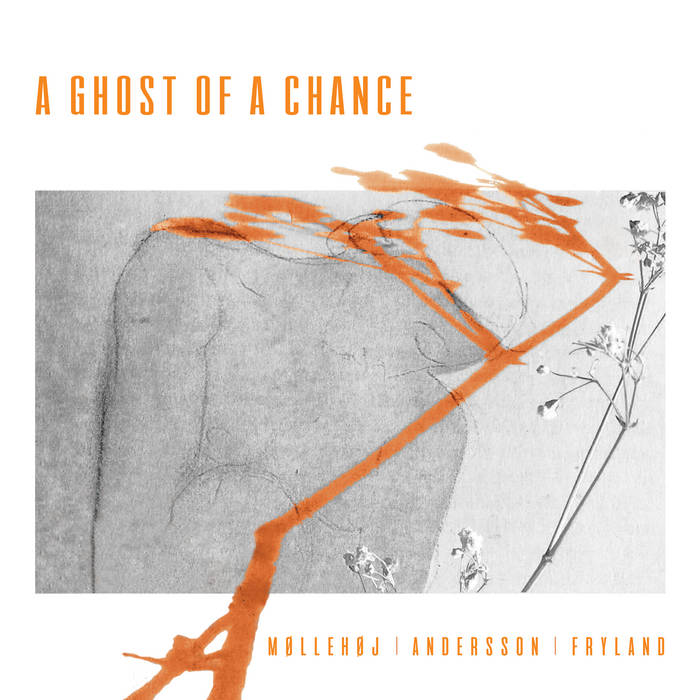
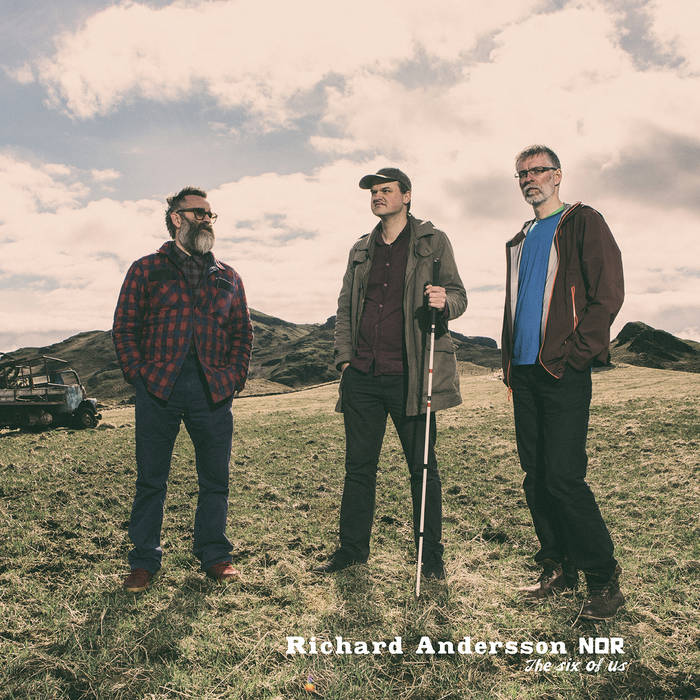
Richard Andersson Inviting * Richard Andersson Inviting * Richard Andersson Inviting * Richard Andersson Inviting
Richard Andersson Inviting * English Version * Richard Andersson Inviting
The fact that jazz in Denmark has enjoyed an outstanding reputation in Europe not only since Niels-Henning Ørsted Pedersen on bass should be well known, after all Copenhagen was an attractive place in the sixties for such famous jazz musicians as Stan Getz (1958-1961 in Denmark) , Oscar Pettiford on bass (1958-1960 in Denmark), followed by Dexter Gordon (1962 – 1976), Kenny Drew (1961 until his death in 1993 in Denmark), Ben Webster (1964 until his death in 1973 in Denmark), Horace Parlan (1972 until his death in 2017 in Denmark)and Thad Jones (1978 – 1984 in Denmark), to name a few.
The club Jazzhuz Montmartre (official website) also became a place of refuge and longing, had to close in the nineties, but reopened in 2010. Jazz performances are also held at Paradise Jazz, La Fontaine, Atlas (Aarhus). For the history of jazz in Denmark, I refer you to Wikipedia. (You can find more live jazz references on Livejazz.dk and danishjazz (and also on this page: Jazz Albums Denmark Review 2021).
Our attention goes to bassist Richard Andersson, born in 1982, blinded in a fireworks accident at fourteen, and despite or because of that we look at a very extensive body of work, you can find the discography here. Starting with the first album Please Recycle (2010), through Intuition (2012), Udu (2012), Splitting up in Boston (2105) In Transit (2016) and Itu (also 2016), Vadaxpixlar (2017) Nor (2017) The Six of US (2018), A Ghost of a Chance with Per Mollehoj (2019), through What’s New? (2019), Pocket Music (2020) and U-Synlig (2022) we arrive at Inviting (August 2022).
I mention this series not for nothing: because, what is not self-evident in times of onomatopoeia, crashing and calling for attention, all recordings have a stringency and recognizable note inherent, an attention of the musicians to each other, content security is immanent, you do not know which recording to recommend first, they are all clearly audibly intense, exciting and ideally suited to withdraw from the noise of the time and focus on what becomes important.
Richard Andersson refers on his website to Larry Grenadier, the bass player of Brad Mehldau, Pat Metheny, Joshua Redman, John Scofield, Charles Lloyd and Wolfgang Muthspiel – and maybe some still know: there was also once a young Jorge Rossy, who also stirred his broom with Brad Mehldau. It was precisely this Jorge Rossy that Richard Andersson was able to win over for his latest recording. We meet another top-class player: Per Møllehøj, also from Denmark, who recently attracted a lot of attention with his recording ‚S Wonderful with Kirk Knuffke.
Three masters of their instrument meet and give us the chance to give special weight to this once and to anticipate: also to award it. It is not only the respect for the work that makes you a friend of this work, it is the coherent in itself, again now, and that alone, yes, that alone is of great importance, do I need to emphasize?
„I loved the way Larry Grenadier and Jorge Rossy played with such a natural feel and groove, even when they played in an odd time signature. I studied that a lot back then, and performing with Jorge Rossy himself (and capturing some of those tricky rhythmic ideas on record!) is a treat. And to top it all off, it’s a great honor for me to invite my longtime friend Per Møllehøj on guitar.“
Himself long since become a friend of standards in jazz – only recently I could hardly get enough of them with Keith Jarrett, there is a new standards palette to listen to: for comparison there is, it fact: the jazzstandards.com – apparently, however, the title Inviting is somewhat broader: in addition to the musicians, Richard Andersson has also invited standards that are not immediately recognizable as jazz standards. These include right up front
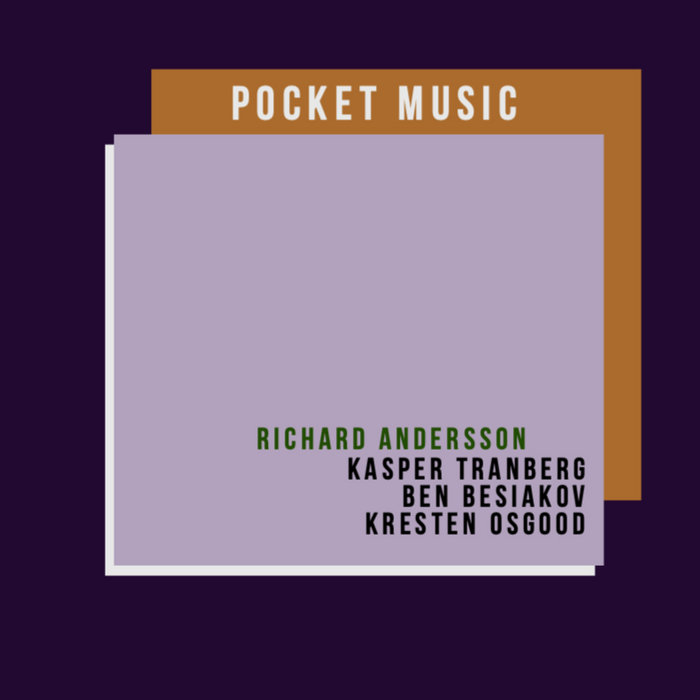
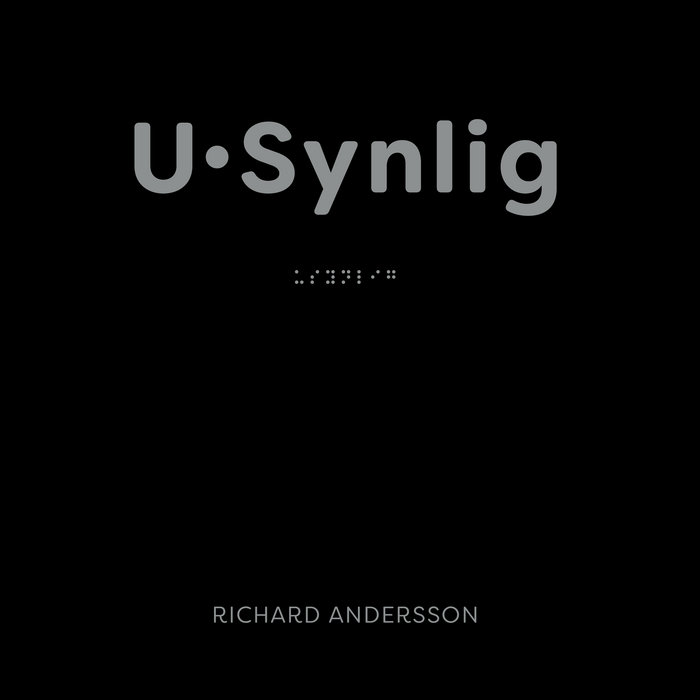
You Are My everything : starting with a swinging ride, it immediately goes over one’s listening habit into a crisp running bass, a loosely forward driving cymbal crash, the guitar is so free to offer everything its corpus holds. Reeled in. Period. Right in, so simple so clear.
The original composition Uganda blues draws its fascination from the convention of a blues with clear lines and but very finely tuned transitions between sweeping bass and fragmentation of the song over percussion and guitar, a little drum spectacle included.
Invitation – a first highlight, from the back of the room – cautiously approaching and in the course with some refinements: which is also to the point: Invitation is comparable (because standard) : it offers: George Shearing – with Niels-Henning Ørsted Pedersen and Louis Stewart (guitar) on The MPS Trio Sessions.
(Btw: we don’t compare to find out who presented it better, we compare it to broaden our listening field – the default from Shearing’s recording with the technically hardly faultable solo of Louis Stewart could have tempted to an extra guitar exaggeration on the part of Per Møllehøj here, too, but they decide for something elegant, a tension drop, which Andersson is allowed to retrieve from the depth with a quiet solo, very chic.
If you also and additionally want to reward yourself: there is a statement by John Coltrane on Invitation. To be re-listened to on The Stardust Session. No less chic.
In Eyes as beautiful as yours the tempo is set to ballad with emphasis on the bass solo. To go into bop tempo in Homage to the giants, that gives Per Møllehøj some opportunity to exhaust his phrasing, his changes between chord progression and solo playing. Like someone in love – is consequently quieter again, superficial, but the tempo increases again, the spaces widen, it’s all so elegant and softly drawn, just the braking and pulling up again, BIG!
Trance blues now, clear thing: traded as a taste enhancer or playlist candidate, with this even the last skeptic should lift his gaze from the glass and switch to smile. My personal favorite, alone how simple beat can push itself without frills and too much effort, latest here.
„Having Per Møllehøj and Jorge Rossy in a trio playing standards and the like is probably the most perfect musical situation imaginable for a bass player like me.“
Not only for a bass player, I might add, this is equally true for those under the headphones or in front of the speakers!
Switching from quiet (From a daydream) to fast be-bop (Conception), we enter the final straight: Cyclic episode and My Melancholy Baby enrich the overall work once again with all the technical subtleties between melodic density and accentuated togetherness, Moon River is allowed to ask one last question as a close-up: when you deal with standards from jazz, should you then address the audience or rather follow your own voice – the answer in this case is as simple as clear: listen to it, take your time. The invitation stands.
This trio is one to remember and hope it finds its way to the nearest club. Musicians big, arrangements big, executions big, the whole thing garnished with an almost cautious wording: Inviting means in the context: the joy of music is mutual.
It only needs the audience to accept the invitation!
Richard Andersson Inviting
Richard Andersson – bass (*1982) Denmark
Rewards and recognizions:
”Best of the year 2015: Honorable Mention – New Releases” The NYC Jazz Record (for the record Splitting up in Boston – Garzone/Bergonzi/Moses/Andersson)
-“Best Danish Releases of 2010” AllAboutJazz (for the record Please Recycle)
-”Stjerneprisen 2010”
-”Funen Jazz musician of the Year 2010”
-”The NHØP Honorable Mention” at The international Bassconvention, 2013.
